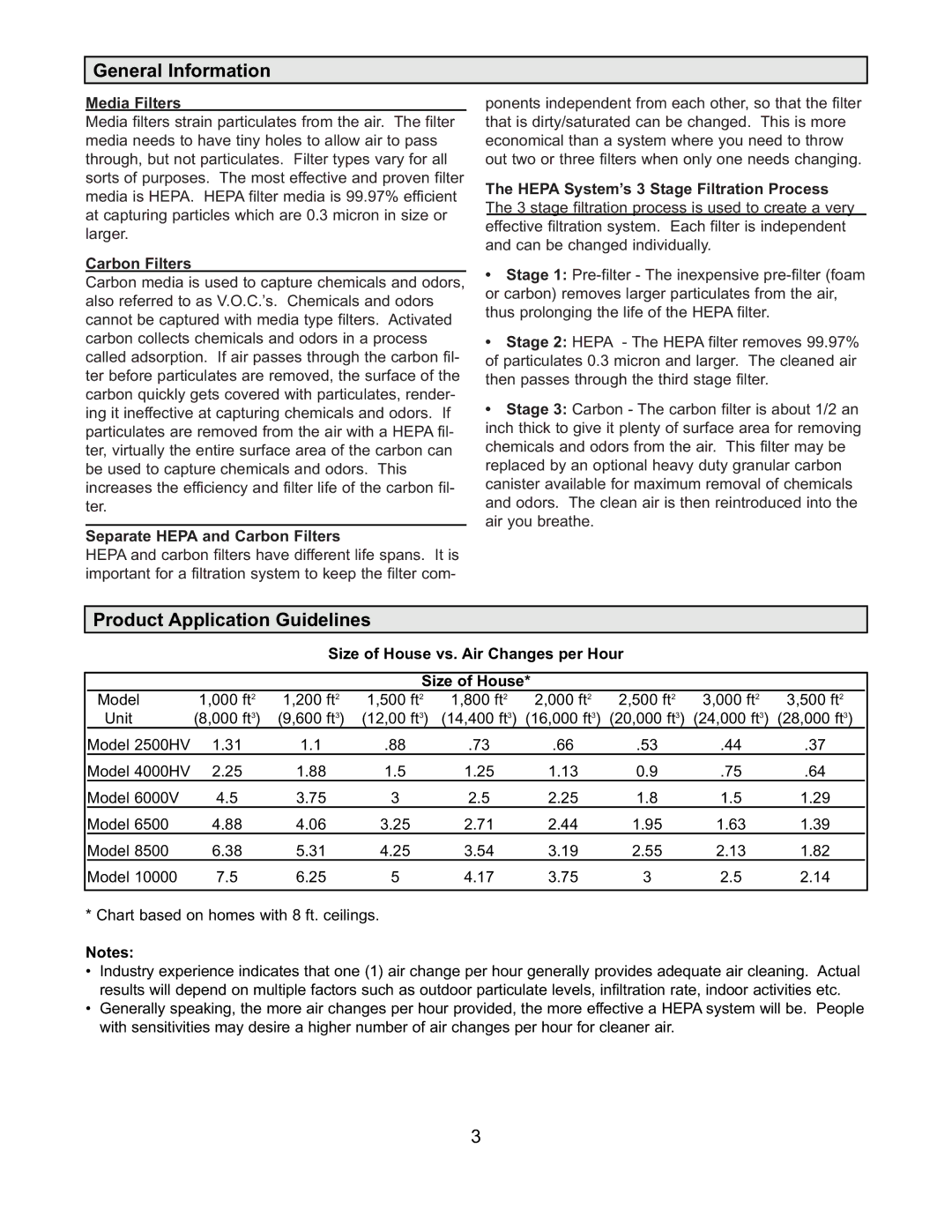2500HV, 6000V, 8500 & 10000, 6500, 4000HV specifications
The Americair series, including the models 4000V, 8500, 10000, 6500, and 5000V, represents a significant advancement in air purification technology. Designed for commercial and industrial applications, these units are engineered to enhance indoor air quality while ensuring maximum efficiency and user convenience.One of the standout features across these models is the use of advanced HEPA filtration system. HEPA filters are designed to capture at least 99.97% of airborne particles, including dust, pollen, smoke, and other allergens, down to 0.3 microns in size. This capability is crucial for environments that demand stringent air quality standards, such as hospitals, schools, and offices.
The Americair 4000V model is tailored for smaller spaces, yet it packs a powerful punch with a CADR (Clean Air Delivery Rate) that ensures rapid air cleaning. It's particularly suited for rooms up to 400 square feet, making it ideal for small businesses and home offices. The user-friendly interface allows for easy adjustments, and the lightweight design ensures portability.
Moving up in capacity, the Americair 5000V and 6500 models cater to medium-sized rooms, providing enhanced CADR levels. These units incorporate smart technology, allowing for app connectivity, enabling users to monitor air quality in real time and receive notifications for filter changes.
The Americair 8500 and 10000 models are designed for larger spaces such as auditoriums and open-plan offices. With high-performance motors and multi-stage filtration systems, these models not only purify the air but also circulate it efficiently. Additionally, they come equipped with UV-C light technology, which works to eliminate germs and bacteria, enhancing health safety in populated areas.
All models feature energy-efficient designs, ensuring they consume less power while maintaining high performance levels. Noise reduction technology is also integrated, making these units operate quietly, an essential factor for environments requiring minimal disruption.
In conclusion, the Americair series stands out with its combination of powerful filtration, energy efficiency, and user-friendly technology. Whether for a small office or a large industrial space, these models provide versatile solutions for improving indoor air quality, promoting a healthier environment for all.

